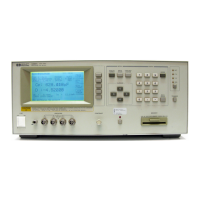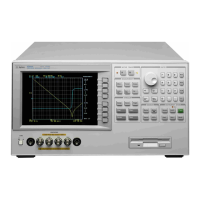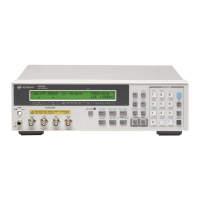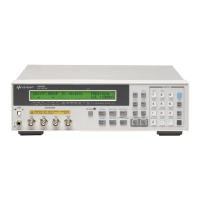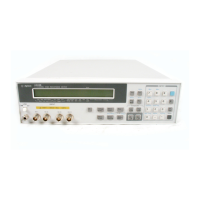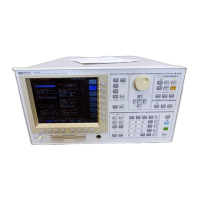36 Chapter 4
Preparation for Accurate Measurement (Executing Compensation)
Executing OPEN/SHORT/LOAD Compensation
Executing OPEN/SHORT/LOAD Compensation
Turning ON/OFF compensation function
To turn ON/OFF each type of compensation, use the corresponding command below.
Executing the measurement of compensation data with the :CORR:COLL command on
page 157 automatically measures data and turns ON the compensation.
Measuring compensation data
Measuring compensation data
To measure each type of compensation data, use the following command.
• :CORR:COLL on page 157
When you execute the above command, measurement is performed only for the frequency
specified at execution time. The result is stored as the data for normal operation when the
multi-compensation function is OFF and as the data for multi-compensation when it is ON
(for the channel that has been selected at execution).
Settings for the cable length and the frequency shift (for 1 MHz) during measurement are
stored together with the obtained result.
The compensation data is measured under the following measurement conditions:
• The auto range mode is used during measurement.
• The measurement time is measured in the long mode.
• The low C reject function is OFF during measurement.
• The output impedance of the measurement signal source is set to 20
Ω independent of
the used measurement range when the SHORT compensation data is measured.
For other settings, the conditions set up at execution are used for the measurement.
Defining LOAD compensation standard
Before measuring LOAD compensation data, you must define the LOAD compensation
standard. To define the LOAD compensation standard, use the following commands.
• :CORR:CKIT:STAN3 on page 155
• :CORR:CKIT:STAN3:FORM on page 156
Type of compensation Command
OPEN compensation :CORR:OPEN on page 165
SHORT compensation :CORR:SHOR on page 165
LOAD compensation :CORR:LOAD on page 160
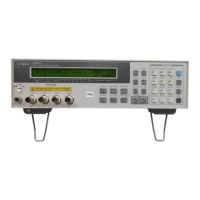
